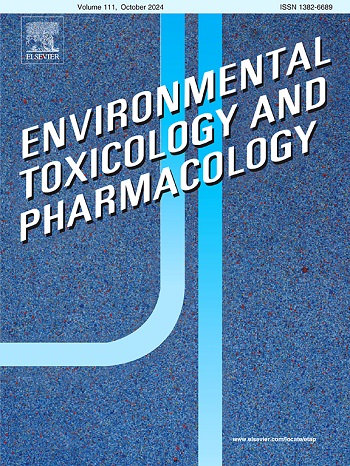PDYN 68-bpVNTR、BDNF rs6265、OPRD1 rss569356和OPRM1 rs2075572多态性对阿片类药物与甲基苯丙胺共同使用的影响
IF 4.2
3区 环境科学与生态学
Q2 ENVIRONMENTAL SCIENCES
引用次数: 0
摘要
为了研究PDYN 68-bpVNTR、BDNF rs6265、OPRD1 rs569356和OPRM1 rs2075572变异对阿片类药物和甲基苯丙胺共同使用易感性的影响,共纳入532人,包括阿片类药物(n = 104)和甲基苯丙胺(n = 166)使用者,以及阿片类药物和甲基苯丙胺共同使用者(n = 158)和健康个体(n = 104)。采用PCR- rflp方法对BDNF rs6265、OPRD1 rss569356和OPRM1 rs2075572进行基因分型,对PDYN 68-bp VNTR进行PCR分型。冲动、渴望、退缩、焦虑和抑郁症状的评估采用量表进行。在PDYN 68-bp VNTR等位基因方面,药物使用组与对照组存在显著差异(p = 0.001)。PDYN 68-bp VNTR的等位基因频率在阿片类药物使用者和甲基苯丙胺使用者之间存在差异(p = 0.018)。5重复等位基因首次在土耳其人群中观察到。所分析的多态性可能有助于成瘾的发展,对冲动、渴望和戒断产生影响。本文章由计算机程序翻译,如有差异,请以英文原文为准。
Effects of PDYN 68-bpVNTR, BDNF rs6265, OPRD1 rs569356 and OPRM1 rs2075572 polymorphisms on opioid-methamphetamine co-use
To investigate the impact of PDYN 68-bpVNTR, BDNF rs6265, OPRD1 rs569356 and OPRM1 rs2075572 variations on the susceptibility to opioid-methamphetamine co-use, a total of 532 individuals, including opioid (n = 104), and methamphetamine (n = 166) users as well as opioid and methamphetamine co- users (n = 158) and healthy individuals (n = 104), were included. BDNF rs6265, OPRD1 rs569356 and OPRM1 rs2075572 were genotyped by PCR-RFLP method, while PDYN 68-bp VNTR was genotyped by PCR. The assessment of impulsiveness, craving, withdrawal, anxiety and depressive symptoms was conducted using scales. A significant difference was identified between the substance-using groups and the control group in view of the alleles of PDYN 68-bp VNTR (p = 0.001). The allele frequencies of the PDYN 68-bp VNTR exhibited a difference between opioid and methamphetamine users (p = 0.018). The 5-repeat allele was first observed in the Turkish population. The analysed polymorphisms could contribute to the development of addiction, exerting an influence on impulsiveness, craving and withdrawal.
求助全文
通过发布文献求助,成功后即可免费获取论文全文。
去求助
来源期刊
CiteScore
7.00
自引率
4.70%
发文量
185
审稿时长
34 days
期刊介绍:
Environmental Toxicology and Pharmacology publishes the results of studies concerning toxic and pharmacological effects of (human and veterinary) drugs and of environmental contaminants in animals and man.
Areas of special interest are: molecular mechanisms of toxicity, biotransformation and toxicokinetics (including toxicokinetic modelling), molecular, biochemical and physiological mechanisms explaining differences in sensitivity between species and individuals, the characterisation of pathophysiological models and mechanisms involved in the development of effects and the identification of biological markers that can be used to study exposure and effects in man and animals.
In addition to full length papers, short communications, full-length reviews and mini-reviews, Environmental Toxicology and Pharmacology will publish in depth assessments of special problem areas. The latter publications may exceed the length of a full length paper three to fourfold. A basic requirement is that the assessments are made under the auspices of international groups of leading experts in the fields concerned. The information examined may either consist of data that were already published, or of new data that were obtained within the framework of collaborative research programmes. Provision is also made for the acceptance of minireviews on (classes of) compounds, toxicities or mechanisms, debating recent advances in rapidly developing fields that fall within the scope of the journal.

 求助内容:
求助内容: 应助结果提醒方式:
应助结果提醒方式:


